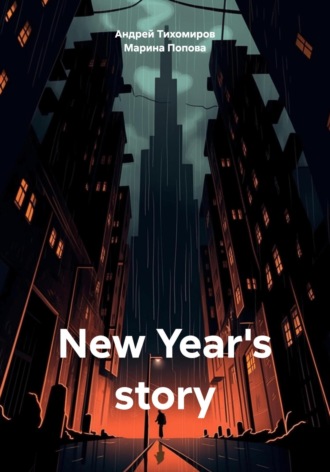
Андрей Тихомиров
New Year's story
Vietnamese New Year is the Nguyen Giang Festival, which in most cases falls on the same day as Chinese New Year due to the Vietnamese using a lunar calendar similar to Chinese.
The Tibetan New Year is called Losar and falls between January and March.
The Iranian New Year, called Nowruz, is the day marking the exact moment of the vernal equinox, which usually falls on March 20 or 21, marking the beginning of the spring season. The Zoroastrian New Year coincides with the Iranian New Year of Nowruz and is celebrated by Parsis in India and by Zoroastrians and Persians around the world. According to the Baha'i calendar, the new year begins on the vernal equinox on March 20 or 21 and is called Nowruz. The Iranian tradition was also passed on to Central Asian countries, including the Kazakhs, Uzbeks and Uyghurs, and is known there as Nauryz. It is usually celebrated on March 22.
Balinese New Year, based on the Saka calendar (Balinese-Javanese calendar), is called Nyepi and falls on the Balinese Lunar New Year (around March). It is a day of silence, fasting and meditation: observed from 6 am to 6 am the next day, Nyepi is a day set aside for self-reflection and as such, anything that can interfere with the achievement of this goal is limited. Although Nyepi is a predominantly Hindu holiday, non-Hindu Balinese also observe the day of silence out of respect for their fellow citizens. Even tourists are no exception; although they can do whatever they want in their hotels, no one is allowed onto the beaches or streets, and Bali's only airport remains closed all day. Exceptions are provided only for ambulances transporting people with life-threatening conditions and women about to give birth. The Javanese people also celebrate their Satu Suro on this day.
Among the peoples of India, New Year usually falls in March or April. During these months, people in the states of Andhra Pradesh, Telangana and Karnataka in southern India celebrate the arrival of the New Year. The first month of the new year is Chaitra Masa. In the Kashmiri calendar, Navre festival is celebrated in March–April of the New Year. This sacred day of Kashmiri Brahmins has been celebrated for thousands of years. Padwa is celebrated as the first day of the Hindu year by the people of Maharashtra, India and Sanskar Padwa is celebrated in Goa. This day falls in March-April and coincides with Ugadi. The Sitkha festival of Cheti Chand is celebrated on the same day as Ugadi/Gudi Padwa to mark the celebration of the Sindhi New Year. The Thelemic New Year on March 20 (or, according to some accounts, April 8) is usually celebrated with an invocation to Ra-Hur-Khuit, commemorating the beginning of the New Aeon in 1904. It also marks the beginning of the twenty-two-day Thelemic holy season, which ends on the third day of the writing of the Book of the Law. Kalasha Pathans celebrate their chaumus, which marks the beginning of their year in Pakistan's Chitral and parts of India. The Marwari New Year (Tapna) is celebrated on the day of the Diwali festival, which is the last day of Krishna Paksha in the month of Ashwin and also the last day of the month of Ashwin in the Hindu calendar. Gujarati New Year (Bestu/Nao Varas) is celebrated the day after the festival of Diwali (which falls in mid-autumn – either October or November, depending on the lunar calendar). Gujarati New Year is synonymous with Sood Ekam, which is the first day of Shukla Paksha in the month of Kartik, which is considered the first day of the first month of the Gujarati lunar calendar. Most other Hindus celebrate New Year in early spring. The Gujarati community all over the world celebrates the New Year after Diwali to mark the beginning of a new financial year. “The specificity of India since the time of the Aryan (Indo-European) invasion has been the dominance of the communal-caste social structure sanctified by Hinduism. Hindus all over the world celebrate their main holiday, the Diwali festival (compare Russian “divo”, “wonder”, “maiden”, Czech and Slovak “divadlo” – “theater”, Czech and Slovak hudba – “music”) , is the most significant in Hinduism. Diwali is celebrated as the “Festival of Lights” and symbolizes the victory of good over evil and candles and lanterns are lit everywhere to mark this victory. The main theme of the festival decorations is glowing lanterns, lights, fireworks and lit candles decorating statues of animals and gods. Diwali usually falls at the end of October – beginning of November, in this it is somewhat reminiscent of the ancient pagan autumn harvest festivals celebrated among Indo-European peoples in the fall. In modern India, Diwali is considered to be a New Year's holiday, although it has different interpretations in different regions of the country. Apart from India itself, Diwali is widely celebrated wherever there are large Hindu communities. In ancient times, people, like modern children, “marveled” at theatrical performances, perceived them as real phenomena, where musicians “buzzed” on pipes and musical instruments” (Tikhomirov A.E., Tikhomirova G.M., Migrations of Indo-Europeans. Indians – Indo-Europeans "Ridero", Ekaterinburg, 2018, p. 37).
The people of Sikkim celebrate their new year called Losar. The Hindu Baloch in Pakistan and India celebrate their new year, called Bej Roh, in the month of Daardan in their Saaldar calendar. New Year (Rongali Bihu or Bohag Bihu) is celebrated on April 14 or 15 in the Indian state of Assam. Tamil New Year (Puthandu) is celebrated in the southern Indian state of Tamil Nadu on the first of Chitrai (April 13, 14 or 15). In the temple city of Madurai, Chitrai Thiruvizha is celebrated at the Meenakshi Temple. There is also a huge exhibition called Chitrai Porutkaatchi. It is also called Chitrai Vishu in some parts of Southern Tamil Nadu. In Hindu homes, this day is celebrated with a festival and the entrances of the houses are elaborately decorated with kolams. New Year is celebrated on the 1st of Boishak (April 14 or 15) in Bangladesh and the Indian states of West Bengal and Tripura. New Year (Vishuva Sankranti) is celebrated on April 14 in the Indian state of Odisha. It is also called Vishuva Sankranti or Pana Sankranti. New Year or Cheyruba is celebrated on April 14 in the Indian state of Manipur with a lot of festivities and revels.
The Sinhala New Year is celebrated with a harvest festival (in the month of Bak) when the sun moves from Meena Rashiya (House of Pisces) to Mesha Rashiya (House of Aries). Sri Lankans begin celebrating their national New Year "Aluth Avurudda" in Sinhala and "Puththandu" in Tamil. However, unlike the common practice of the New Year beginning at midnight, the National New Year begins at a time determined by astrologers by calculating the exact time of the sun's transition from Meena Rashiya (House of Pisces) to Mesha Rashiya (House of Aries). Astrologers determine not only the beginning of a new year, but also the end of the old one. And unlike the usual ending and beginning of a new year, between the end of the Old Year and the beginning of the New there is a period of several hours, which is called the “nona gate” (neutral period). Where part of the sun is in the House of Pisces, and part is in the House of Aries. The Nepalese New Year (Nepalese Sambat) is celebrated in the regions covering the original Nepal. New Year begins on the fourth day of Diwali. The calendar was used as an official calendar until the mid-19th century.
The Water Festival is a form of similar New Year celebrations held in many Southeast Asian countries on the full moon day of the 11th month of the lunisolar calendar each year. The date of the celebration is based on the traditional lunisolar calendar, which determines the dates of Buddhist festivals and holidays, and is celebrated from April 13 to 15. Traditionally, people would discreetly spray each other with water as a sign of respect, but as the new year falls during the hottest month in Southeast Asia, many people end up dousing strangers and passersby in cars in noisy celebrations. The holiday has many different names, specific to each country:
New Year's Day, according to many South and Southeast Asian calendars, falls between April 13 and April 15, marking the beginning of spring.
Neuroz, the Coptic New Year, is a continuation of the ancient Egyptian New Year after the reform of the calendar by the Roman Emperor Augustus. The date of the 1st of Thoth usually falls on August 29th in the Julian calendar, except in the year before the Julian leap year, when it falls on the next day. Leap years, removed from the Gregorian calendar, mean that it currently falls on September 11th or 12th. Enkutatash, the Ethiopian New Year, falls on the same day as Neyrouz.







